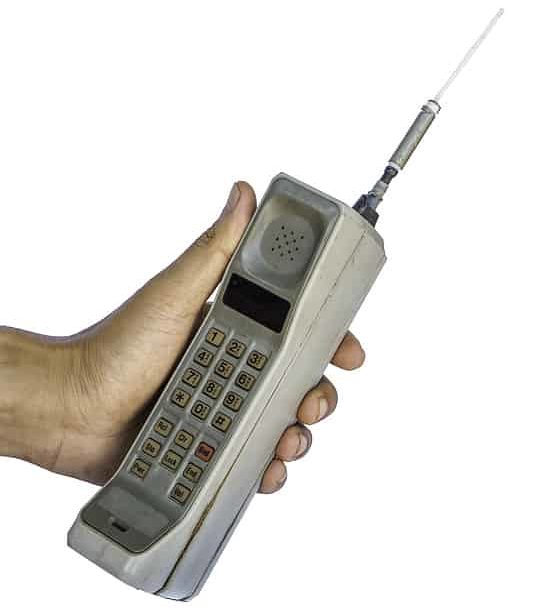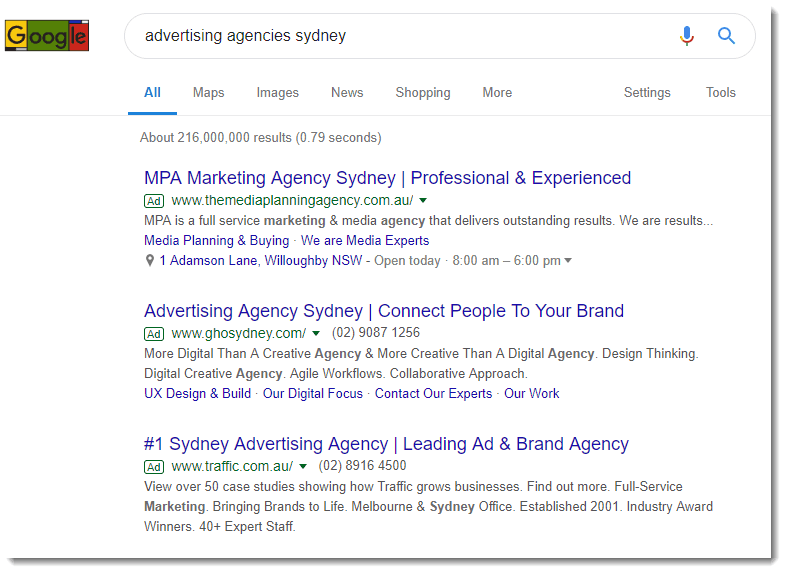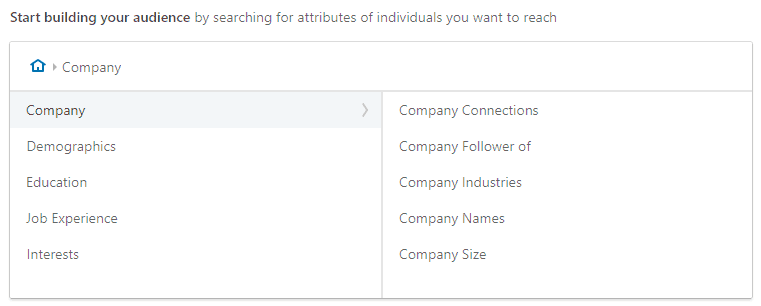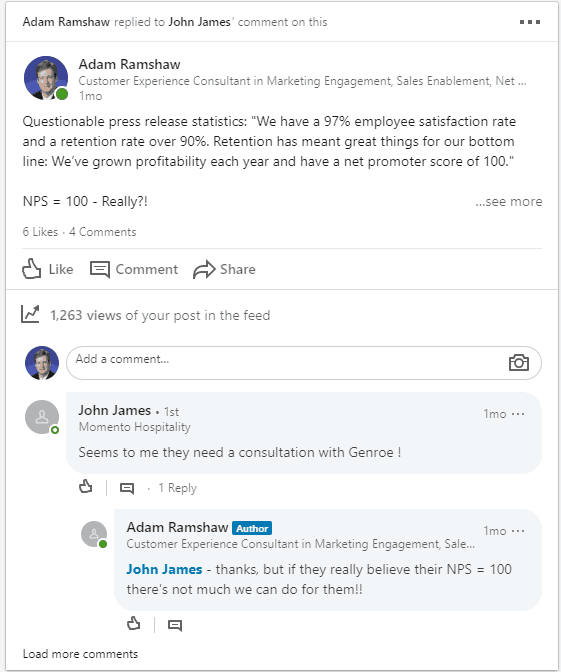OPEN MENUCLOSE MENU
- Services
-
-
B2B Customer Experience
-
B2B Marketing
-
-
- Resources
- About Us
- Contact Us
This Ultimate Guide is for SME B2B organisations looking for practical ways to build a better platform for sales and business growth using proven B2B marketing approaches.
It is a practical resource for SME B2B Founders and Directors, looking to find prospect and convert sales for their business.
In it we cover the key components of B2B Marketing and provide a series of “You need to know” points.
These points are the key things you need to know to be successful based on more than 25 years of experience in B2B marketing.
If you are similar to most B2B organisations your top goals are:
To unpack that a little you probably want:
If you ask business owners about their top B2B marketing challenges you get the normal answers:
But these answers are really symptoms and hide the true marketing challenges SME B2B organisations face.
Those underlying challenges are:
Let’s look how the SME B2B marketing landscape has changed over the last 20 years:

Almost every day there are new B2B marketing ideas you could try.
However, success lies not in attempting to execute all of them but identifying a limited set of tactics you can deliver effectively then implementing relentlessly.
It’s cliched, but true, that prospects have less attention than ever to direct to any topic, including what you want them to hear.
If you want any chance of being successful you have to be 100% relevant to their problem.
Notice I didn’t say, “what you sell”.
I’m sorry to be the one to break this to you, but:
Nobody wants to buy what you’re selling ... but they sure do want to solve their problems!
Adam Ramshaw Tweet
If you help them to do that, you will grab and keep their attention.
It’s an old joke that Marketing and Sales don’t talk to each other – but it’s no longer funny.
The two groups need to be different sides of the same coin not different sides of a canyon.
Besides, it’s getting harder and harder to tell them apart.
Sure a marketing person designing a website is doing a marketing task.
And a sales person negotiating an order is doing a sales task but what about:
A marketing person designing an email lead nurture program.
In the past it was the sales person who called prospects on a routine basis to nurture them – so is marketing doing sales?
A sales person posting a company announcement to their personal LinkedIn feed.
Sounds like they are promoting the company, a.k.a. marketing?
In reality you can’t run marketing and sales separately – they need to work together.
There are four key B2B marketing assets critical to success.
If you have not already created these for your business: stop now and create them.
They underpin everything else you do.
Buyer personas are detailed descriptions of your ideal customer that are used in the marketing process.
They are generalised but accurate pictures of your customer and their needs.
We use Buyer Personas because it’s much easier to create content and positioning statements for “real” people than a fuzzily defined “customer”.
Because they need to be accurate, the best personas are generated using market research, real customer interviews and other data collection approaches.
A Buyer’s Journey is the typical or most likely process a prospect will go through leading up to the purchase of a product or service.
It involves the thought process, reactions and interactions they may go through before they are on-boarded as a client.
It’s important to realise your buyer’s journey is never going to be exactly the same for every prospect but helps you to “get into” the buyer’s thought process so you can help them more effectively.
With a detailed buyer’s journey, you will know;
Positioning Statements are the critical intersection between Personas and Buyers Journey.
A positioning statement is a brief description of a product or service and target market, and how the product or service fills a particular need of the target market. It's meant to be used as an internal tool to align marketing efforts with the brand and value proposition.
HubSpot
Your positioning statement needs to reflect both the customers need and how you will fulfil it. With the other two key assets they also keep sales and marketing aligned.
Genroe's Positioning Statement: We help highly technical SME B2B organisations to create reliable, predictable, consistent streams of the right prospects using the right marketing and sales processes.
Adam Ramshaw Tweet
Distinct to your organization:
Your Positioning Statement should be distinct to your organization.
If you can remove your company name and have the statement apply to your competitors, then it’s probably not specific enough.
There are an almost endless number of types of content you can use in B2B marketing and content is the cornerstone of an effective market process.
Content is critical because you will use and re-use it across all of your sales and marketing processes.
Regardless of whether you engage a content marketing agency or keep it in-house, you need content assets.
Lots of channels can work but you generally need to chain together different channels to move the prospect along the sales process.
For example: you might use Search Engine Marketing and SEO to brings leads to your site, convert them with Content, then move them along the sales process using Email and Telemarketing.
Now let’s review each tactic in turn. In this list we’ll:

Creating information (content, blogs, etc) that your buying persona will find useful and then promoting that content.
Typically, content marketing will include assets targeted at different stages of your buyers purchasing journey.
Works for long sales cycles:
This works particularly well for B2B sales because the long sales cycle means you must stay top of mind for weeks or months. Inbound marketing excels at nurturing prospects over time.
First, be helpful:
Inbound marketing hinges on being helpful and relevant to the customer’s problem.
Everything you do should be focused on helping the buyer persona to solve their problem.
Convert website visitors:
Contrary to popular belief, the primary goal of Inbound Marketing is NOT to get people to come to your website.
The primary goal is to have them come your website AND leave their contact details so you can engage with them.
Check your website now: does every page have some type of conversion opportunity?
Putting “please contact sales now for more information” doesn’t count because it only addresses people a long way down the sales process.
You want to capture early in the sales cycle so you can educate them and become a trusted advisor.

SEO is the art (I use that term deliberately) of arranging the content on your website in such a way as to get it listed as high as possible on the search engines. . This not only generates more visits to your website but also helps you benchmark your SEO performance.
No-one Knows Exactly Why a Page Ranks In a Specific Way:
Due the complexity of the ranking algorithm, no-one, not even the people at Google, know exactly why a specific page ranks at a certain place in search results.
If any company guarantees to get you on Page One of the search results in a short time, walk away.
At best they selling “advertising services,” at worst they are charlatans.
Having said that, there are lots of things you can do lift the potential for your site to rank highly.
Long Term:
This is a long term approach, it may take weeks or months to rank highly for terms relevant to your business.
Long Term Success:
This requires long term investment: you need to continue to work on SEO once your page ranks well.


Email marketing remains the best way to nurture newly acquired contacts and customers alike.
Email gives you the opportunity to reach contacts who are more likely to convert into customers and then, based on their activity, segment them into different categories of interest and stages of the buyer’s journey.
Still Very Effective:
From the chart above you can see email marketing is still the most effective channel for driving early stage engagement and conversions to sales.
Send Targeted and Relevant Content:
While it’s easy to send generic content to everyone on your list, doing so just decreases their engagement or drives them to unsubscribe.
Use information that you know about them (role, etc) and what they do (email clicks and website page views) to tailor the content people receive. You goal is to stay interesting and relevant to them long term.
Fine Tune your Content over Time:
Review email metrics (open, click through, unsubscribe and engagement rates) on an ongoing basis.
Small changes and improvements can be made regularly to keep improving the quality and the engagement of your emails.
These small changes combine to move the needle a long way over time.

Content marketing is a strategic marketing approach focused on creating and distributing valuable, relevant, and consistent content to attract and retain a clearly defined audience — and, ultimately, to drive profitable customer action.
Content Marketing Institute
Connects Early in the Buyer’s Journey:
Content marketing is very effective partly because of the way the buyer’s journey has radically transformed over the past 15 years.
Much of the research for any purchase is now done on-line before a sales person is even contacted.
Just how much of the process is completed prior to contact is up for debate but we all know from our daily experience, it’s substantial.
From problem identification through to vendor identification, prospects search on-line. If you’re not appearing in their searches then you’re not on their radar.
This means your content must cover the entire buying process from problem identification to vendor selection.
If your website focuses solely on “buy us now” you’re appearing very (too) late in the sales cycle.
Content Creation Needs to be Prioritised:
Creating good and appropriate content on a consistent basis is difficult.
You need to plan properly to be successful and that planning must include:
You should mange it using a content calendar.
Technical Staff Need Editing Support:
In most B2B businesses the people with the knowledge to write content relevant to buyers are often technical staff.
Unfortunately, often they are not adept at writing that content.
You need to support them with people who can convert their knowledge into engaging content.

You need to create the right content:
It’s relatively easy to rank on page one of Google or Bing for obscure or odd keywords but if those keywords don’t connect with your: Buyer Persona and Buyer Journey, you’ve wasted your time.
Before writing any content make sure you know which keywords you want to rank for and how they impact your client.

Traditionally a staple of B2B marketing, trade shows and conferences are still attract a lot of both attendees and companies presenting.
These multi-vendor events, essentially, pit each vendor against the other to capture the attention of people (potential prospects) walking past.
Great for Branding:
These work well as broader branding events but many B2B SMEs don’t have the budget.
Follow-up effectively for maximum ROI:
If used for direct lead generation care must be taken to actively manage the prospecting process pre and post event.
Trade show marketing frequently fails to maximise ROI through poor pre-invitation and post event follow-up processes.

The entry point for live webinars has dropped from high cost dedicated hardware and communications systems, to wifi, laptop, headset and webinar account.
As a way of engaging with prospects they can be quite effective but, as for other event type a lot of the work occurs after the event has finished.

Brace yourself for low attendance:
Average no show rates for webinars are around 65%.
Yes, only 35% of people who register will attend.
So you must have a plan in place to create engage with people that don’t attend the webinar itself.
Attention rates are falling:
Even people logged into the webinar may have it running on a second screen and won’t actually hear the content so you need to consider how to actively keep their attention.
Follow-up effectively for maximum ROI :
Just like trade shows, to gain the maximum value from a webinar you need to have great pre and post event processes to turn interest into action.
Many webinars “fail” the ROI test because nothing happens at the end of the webinar. This is when the real work starts.
Reuse for on-demand content:
Turning your live webinar into an on-demand webinar (Content Marketing) is a great way to get enduring value from the time and effort required to create the webinar content in the first place.

Single company events are a great way to get prospects and clients into the same room.
If you have happy customers, putting them in the same room with prospects can move those prospects along the buyer’s journey.
Significant no-show rates:
If the event is free, no-show rates are high, typically 30%+, and can be affected by weather and other factors beyond your control. Surprisingly, charging a nominal fee can increase both attendance and take up.
Complex and costly (relatively):
Because you are responsible for all elements of the event (location booking, audio/visual, signage: digital and physical, etc) they are complex (and can be costly) to set up and run.
Initial Invite List:
You need a starting list of people to invite. Getting that list can be a B2B marketing task in and of itself.
While there are plenty of advertising options, for SME B2B marketing they come down to a few core types:
Off-line is Probably Not for You:
For most SME B2B organisations off-line advertising is not applicable as broadcasting their message to an undifferentiated public is not cost effective.
It will not be covered in this guide.
SEM/Display Advertising Vs Social Advertising:
With SEM you can target the keywords that people are using in their searches but not the profile of the person searching. Social advertising lets you target the demographic (and company graphic) of the person, but not their current interests. So each of these approaches should be used in different ways.
Advertising can be useful for demand management:
Advertising can be turned on and off quickly so can be an excellent way to manage new prospect flow.
Look like undershooting the new customer goal this quarter – turn on the advertising.
Look like overshooting it – turn off the advertising.

This is paid media that shows up in the Google or Bing search results and is driven by the keywords entered by the searcher.
Fees are generally charged by the click, i.e. literally when someone clicks on the advert link you pay.
It can become quite complex, but in simple terms your advertising is shown when people enter your “purchased” keywords into the search engine.

Cost per click varies:
The cost for each click depends, in part, on the competition for the targeted keyword and can be expensive per click for highly sought after keywords.
However, the ROI on those clicks can often justify the higher cost.
Target buyers that are ready:
You should be looking for bottom of the funnel leads – people who are interested in purchasing in the short term.
These keywords will be more expensive than generic keywords but they will be more effective.
Take the example here: anyone searching for “advertising agencies Sydney” probably is looking to hire one soon.
Make Sure You Convert Them:
You’ve paid a lot of money for that click so make sure you don’t send people to your homepage.
Send them to a targeted landing page that has the single goal of having them contact you or leave their details.

Because social networks know so much about you, then are an excellent way to target advertisements to a specific audience. In many ways, this is their core business model: to know you so well they can target advertisements to you exactly.
LinkedIn is Top of the B2B Heap:
While there are lots of networks, LinkedIn is the most important social network for B2B marketing. LinkedIn profiles contain details about their job roles and companies which are invaluable when targeting your message.
Facebook for Smaller B2B businesses:
When targeting smaller businesses Facebook can also be useful.
Target All Segments of the Buyers Journey:
Because you don’t know their position in the Buyer’s journey you should create advertisements with a wider range of messages: top of the funnel, middle of the funnel and bottom of the funnel
Don’t forget Retargeting:
It is possible to track when someone lands on your webpage and use this information to re-target advertising when browse their social stream. This can be a very powerful way to reinforce your message.


Liking, following, sharing – these are the day to day features of all social networks.
In addition to advertising you can, of course, create follower networks the social platforms.
Content can be created and shared, with the hope that it will be shared and re-shared to increase the audience for the content.
LinkedIn is, Again, The One to Use:
As for social advertising, LinkedIn is the best platform for organic B2B social reach.
What You Post Impacts Reach:
The business model for social media companies is keep users on the site.
If you share content that takes people away from the platform (links to external content) their algorithms will actively reduce the number of people that see it.
To get maximum visibility create posts that keep people on the platform – of course that limits their effectiveness for lead capture, so it’s a balancing act.
(As always) Your Goal is to Capture Lead Contact Details:
Don’t become a digital sharecropper.
All social networks are actively reducing the organic reach available to business.
This is, in part, make companies pay for advertising and this trend will only continue
You need to keep focused on capturing prospect details so you can directly contact them later.
Skill Your Team up on Social Selling:
The growing role of social selling means marketing needs to support the sales team directly with appropriate content

Copyright Genroe (Australia) Pty Ltd | All Rights Reserved. | Privacy Policy | Cookie Policy
Net Promoter, Net Promoter Score and NPS are registered trademarks of Bain & Company, Inc., Satmetrix Systems, Inc., and Fred Reichheld.